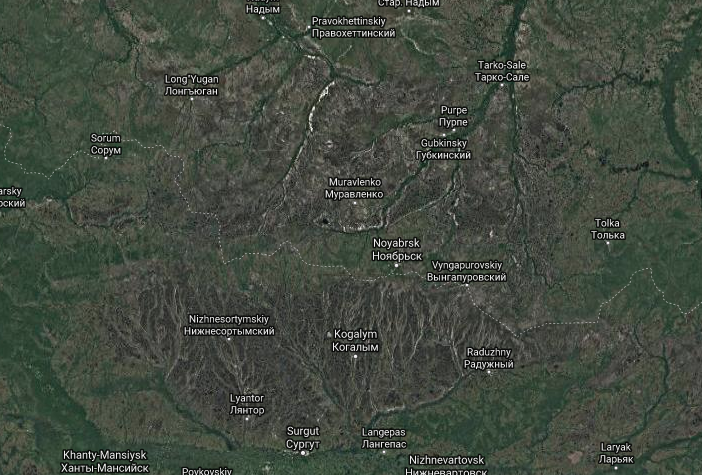Vasyugan Swamp
- Lady Siberia

- Nov 25, 2019
- 3 min read
Updated: Mar 4, 2020

Siberia has the largest swamp on Earth with an area of 53,000 square km. Its length from west to east is 573 km, from north to south - 320 km. The Vasyugan swamp stretches as far as three regions: Tomsk, Omsk, and Novosibirsk. It is bigger than Estonia (45 226 km2) or Bosnia and Herzegovina (51 129 km2) and much bigger than Denmark (42 895 km2) or the Netherlands (41 526 km2).

Vasyugan swamp is located in the central part of Siberia. This huge swamp, about 9,000 years old and the size of Switzerland, is the largest on the globe.
That is, a state with a population of 5,693,085 people (the population of Denmark) or 8,419,600 people, as in Switzerland, could be located on the territory of the swamp. But in fact, the population here is practically absent. Historically, these were places of exile for political prisoners.
Since 1835, a systematic settlement of the exiles began (a new influx of exiles occurred in Vasyugan in the 1930-1950s), this was mainly due to their increase in the local population.

Vasyugan swamp has a huge impact on the environment. It is the main source of freshwater in the region, the volume of which is estimated at 400 km3. According to scientists, many rivers flow from it, at least 800 thousand lakes are located in the swamp. Its evaporation regulates the climate balance in a vast territory. In addition, gas, oil, and peat are taken from the swamp.

But the most important thing: Vasyugan swap is a huge “lung” of our planet that cools it from overheating and absorb carbon, accumulating it in peat and mitigating the greenhouse effect. The swamp absorbs up to 10 million tons of carbon dioxide per year and produces about 4 million tons of oxygen. The peat reserves of the Vasyugan tundra amount to more than 1 billion tons.
During the year, Vasyugan swamp increases by 800 ha. In this region, geological processes are taking place right before our eyes - the emergence of new deposits of peat, new watersheds, the formation of new lakes, streams, and rivers.

I.G. Glushkov tells in his book "Krotovskaya culture on the Irtysh" that once upon a time there lived people of the Usttartas, Odinovskaya and Krotovka cultures, which date back to the 16th – 10th centuries BC.

Samoyedic people
On the outskirts of the swamps, there are settlements of Samoyedic people: Selkups - immigrants from ancient Iran, carriers of a unique Pyzyryk culture, whose roots go back to the VI – III centuries BC. This is precisely their ancestors found in the ancient mounds of Altai.

Selkups
This Pyzyrkians generously tattooed their bodies and mummified the dead relatives. Selkups believe that every person after death becomes a bear, and therefore consider the beast to be their closest relative and worship it.

Pyzyrkian culture, tattoo

The swamp has preserved unique flora and fauna; here you can find rare and endangered species of plants and animals. For example, reindeer, partridge, golden eagle, as well as mink, otter, wolverine, and many others. Valuable medicinal plants and berries grow on swamp bumps: cranberries, blueberries, cloudberries.
Uncontrolled poaching in the dashing 1990s, oil and gas production - all this can destroy this virgin land. As a result of industrial developments, hazardous substances are accumulated in peat - lead, cadmium. The swamp is contaminated with poisonous rocket fuel due to the frequent drops to the Vasyugan tundra region stages of spaceships launched from Baikonur. The villages on the outskirts of the swamp, abandoned by the authorities, are gradually dying and disappearing.
It is currently planned to give it the status of a UNESCO World Heritage Site.
#swamp #largestswamp #russia #siberian #siberia #siberiannature #russiannature #nature #travel #world #worldofnature #bbc #nationalgeographic #discovery #escapetosiberia #earth #travelrussia #travelsiberia #russia #escapetosiberia #russiaentertainment #havefuninrussia #cold #hot #russianentertainments #siberianentertainments



















Comments